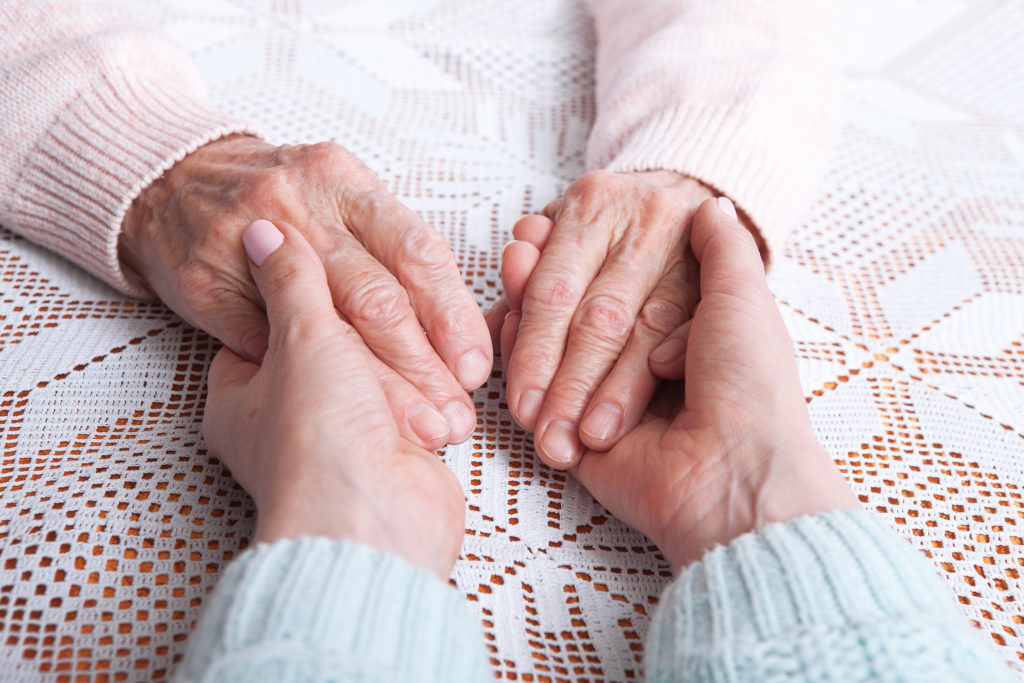Women Spend Much Of Their Lives Caring For Others

They never seem to stop giving as wives and mothers to their husbands and children. So who will take care of mom if she needs long-term care? Will you plan ahead for your long-term care needs?
It’s important that you do plan as women have a greater risk of needing LTC services. Why? Women typically outlive men by an average of about five years. According to AARP, more than two-thirds of Americans 85 or older are women. And about 79 percent of 65-year-old women will need long-term care during their lifetime, according to a study by the Georgetown University Health Policy Institute.
Women sacrifice a lot – reducing their regular work hours or even their own careers to provide care for a spouse or other family members. And as statistics show, they are also more likely to become widowed before needing long-term care themselves. Of course, a husband’s needs may drain assets, leaving the widow with less financial resources to provide for her own care.
ANOTHER REASON TO PLAN AHEAD AND DEVELOP A LONG-TERM CARE STRATEGY FOR YOUR FUTURE.

Education
An AARP survey showed 60 percent of women hadn’t considered how they would pay for long-term care? After decades of taking care of others, women more than ever need to know how to take care of themselves.

Think 
The statistics say your goals should include a portion of your assets are devoted to long-term care insurance, which covers a wide spectrum of products, services, and level of care options.
Why Women Are Especially At Risk

Many trends have led to rising long-term care risk for women…
(1) Longevity
(2) The high cost of long-term care
(3) Alzheimer’s disease and dementia
(4) Women as caregivers
(5) Financial sacrifice
(6) The Sandwich Generation

Longevity
On average, the difference between men and women’s life expectancies beyond age 65 is approximately 2½ years — with 55 percent of those women being single, divorced or widowed. (Lincoln Financial Group and Hanover Research, Inc., “The Longevity Opportunity: Planning for Longer Lives as a Family 2015 Survey, July 2017)
(U.S. Census Bureau, “Current Population Survey, Annual Social and Economic Supplement, Table A1. Marital Status of People 15 Years and Over, by Age, Sex, and Personal Earnings, 2015,” November 2015)
The longevity bonus women experience may create a greater risk for care. A look at who currently receives long-term care shows this clearly: More than two-thirds of the long-term care population in both nursing homes and residential communities are women.
(Centers for Disease Control and Prevention, “Long-Term Care Providers and Services Users in the United States: Data From the National Study of Long-Term Care Providers, 2013–2014,”Vital and Health Statistics, Series 3, No. 38, February 2016).
Women at age 65 have a life expectancy of 23 more years, or age 88. (Sponsored by American Academy of Actuaries and Society of Actuaries, “Actuaries Longevity Illustrator,” January 2016).

High Cost of Long Term Care
Regardless of where you live in the country, the costs of long-term care are staggering and will likely continue to rise. Plus, the cycle of care is not linear, and it could quickly become overwhelming. Care might just as easily commence with the need for nursing home care as it could with an in-home health aid.

Women Often Need Care Longer Than Men
In fact, women typically need long-term care services for 1.5 years longer than men. The costs for an extra 18 months of care could add up to six figures, which means that long-term care expenses for women may be considerably higher.
(U.S. Department of Health and Human Services, “How Much Care Will You Need,” LongTermCare.gov, last modified February 21, 2017)
Although the type of long-term care women receive will depend largely upon their needs, each comes with a different price tag. The reality is that the vast majority of adults (80 percent), ages 65 and older, who need long-term care are living in private homes, not in institutions.
(Centers for Disease Control and Prevention, “Long-Term Care Providers and Services Users in the United States: Data From the National Study of Long-Term Care Providers, 2013–2014,”Vital and Health Statistics, Series 3, No. 38, February 2016)

Widows often encounter economic and lifestyle hardships that couples might not, including:
(1) More likely to live alone (69 percent) with no one in their household to help with daily activities.
(2) Lower household Social Security income.
(3) Loss of pension benefits or reduced payouts to a surviving spouse.
(Renee Stepler, “Smaller Share of Women Ages 65 and Older Are Living Alone,” Pew Research Center, February 18, 2016)


Alzheimer’s Disease and Dementia
Women are more predisposed than men to develop Alzheimer’s disease, the most common form of dementia. In the United States, of the 5.2 million of those ages 65 or older with Alzheimer’s, 3.3 million are female. At ages 71 and above, 16 percent of women suffer from Alzheimer’s disease and other dementias, in comparison to 11 percent of men. (Alzheimer’s Association, “2016 Alzheimer’s Disease Facts And Figures,” alz.org, January 2017)
Studies indicate that there are a number of factors at play that may increase the odds that women are more likely than men to develop Alzheimer’s disease, such as:
The fact that women outlive men — AGE is the greatest risk factor for the disease.
Genetics — Women may be more genetically predisposed to develop Alzheimer’s disease. (Alzheimer’s Association, “2016 Alzheimer’s Disease Facts And Figures,” alz.org, January 2017)

Women As Caregivers
Within their household, women are most likely to be the first, last, and most affected by a long-term care event. They tend to be the primary caregiver more often than men (75 percent) and dedicate as much as 50 percent more time providing care than males. (Family Caregiver Alliance, “Caregiver Statistics: Demographics,” FCA, January 2016)
On average, caregivers spend 24 hours a week caring for a loved one and nearly 1 in 4 provide 41 hours or more of care per week. (NAC and AARP, “2015 Report Caregiving in the U.S.,” June 2015)
Many times American women are juggling the responsibility of caring for a family member and full-time employment. Today, 20 percent of women in the workforce are also family caregivers. The pressure of trying to maintain life balance while working and providing care may be even more significant for single women who may have to shoulder the burden alone. (Family Caregiver Alliance, “Women and Caregiving: Facts and Figures,” FCA, February 2015)
The sacrifice made by many female caregivers goes beyond personal time and includes time lost in their career, parenting their own children, leading a healthy lifestyle, family life and more. Compounding the problem is the fact that caregiving has been linked to depression and anxiety placing women more at risk than men for these two conditions. (Office on Women’s Health, U.S. Department of Health and Human Services, “Caregiver Stress,” Womenshealth.gov, revised January 4, 2017)
What’s even more disconcerting is the fact that physical stress of providing care may contribute to the long-term care needs of the female caregiver.
1 in 4 develops health problems as a result of caregiving activities. Women who spend 9 hours or more caring for a spouse double their risk of coronary heart disease, and subject themselves to other health issues, such as hypertension, disorders of the immune system, and the increased risk for mortality. (Family Caregiver Alliance, “Women and Caregiving: Facts and Figures,” FCA, February 2015)
36% of female caregivers handle the most difficult tasks (toileting, bathing, and dressing) when compared with their male counterparts. (Source: Family Caregiver Alliance, “Statistical Portrait of Caregivers in the US,” FCA, January 2015)


Financial Sacrifice
When women assume the role of caregiver, they often risk serious long-term financial consequences. They may reduce the hours they work, take a leave of absence or put their careers on hold. Even though the Family Medical Leave Act gives job protection to millions of Americans, it does not guarantee paid time off.
Only 13 percent of U.S. workers in the private sector have access to paid family leave. (Office on Women’s Health, U.S. Department of Health and Human Services, “Caregiver Stress,” Womenshealth.gov, revised January 4, 2017) (Bureau of Labor Statistics, “Access to Paid Family Leave,” TED: The Economics Daily, November 4, 2016)
Today, half of the female working population in this country has taken leave to care for someone in their family. As a result, 50 percent of these workers are concerned it will have a negative effect on their retirement financial security. (LIMRA, “Half of Working Women Have Taken Leave to Care for Family,” September 20, 2016)
Fewer hours on the job and less career advancement could also be linked directly to lower retirement income from Social Security, pensions and other retirement programs. The cost to female caregivers has the potential to be quite considerable, amounting to an average of $325,000 in lost wages and Social Security benefits. (Peterson, J.D., Valerie., “The Impact of Caregiving on Women,” ElderCounsel Blog, September 14, 2016)

The Sandwich Generation Difficulties
In the early 1980s, the social worker, Dorothy Miller, noticed a new phenomenon happening in the family, which she referred to as the “Sandwich Generation.” This term refers to multigenerational caregiving in a household, where adult children became sandwiched between the responsibilities of raising children and caring for aging parents. (Interim HealthCare, ”The Sandwich Generation,” April 15, 2016)
Middle-aged Americans found themselves in this predicament because couples postponed having children until their mid-to-late 30s while, at the same time, their parents continued to live longer.
Today, this issue has blossomed into three categories of Sandwich Generation.
(1) Traditional: Adults who are parenting young children and helping aging parents.
(2) Club Sandwich: Individuals in their 30s or 40s with young children, aging parents and grandparents, or those in their 50s and 60s who are assisting aging parents, adult children, and grandchildren.
(3) Open Faced: Any other individuals involved in eldercare.
Those who find themselves caught in the Sandwich Generation trap bear the burden of financial challenges, as well as stress and depression. (Senior Living, “What is the Sandwich Generation,” Senior Living Blog, October 5, 2016)

Take Charge Of Your Life
Because the risk of eventually needing care or providing care, or both is much greater for women than men, here are 4 steps to prepare for the challenges.
(1) Put Yourself First.
Think about your life and how the possibility that someone you love might need care in the future.
If you have a spouse or partner, do you think you could physically provide that care? If you have parents or in-laws, do you think you could physically provide that care, or help pay for the care they need? If you’re an only child, only sister or a sibling residing near your parents, what is the plan if mom or dad needs care?
(2) Think about the possibility of your needing care someday.
Would you want to stay at home and receive care? Or would you rather receive care in a facility?
If maintaining friendships and continuity in your life are important to you, consider how a sudden health-related problem requiring long-term care might disrupt your lifestyle if no one knows your wishes because you haven’t planned.
(3) Plan for long-term care as a family.
Talk with your spouse, your siblings, your parents, and your in-laws.
Have an open discussion about expectations and the importance of establishing a long-term care plan.
(4) Express your concerns with me now to help protect yourself and your loved ones in the future.
We can consider any issues you have regarding the importance of long-term care planning.

